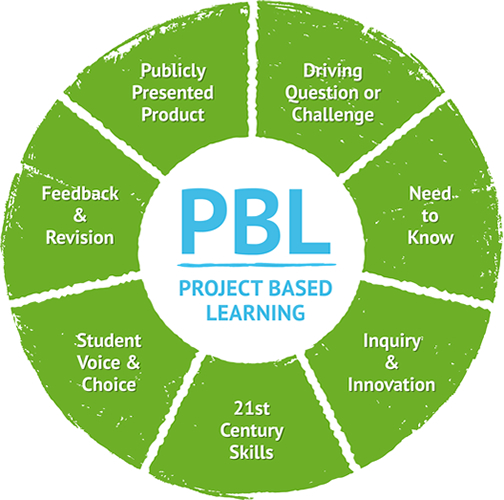Project Based Learning takes some creativity and effort. It may mean more planning time for you if you are not used to creating authentic or semi-authentic experiences for your students. It may mean seeking advice from colleagues in your school, your district, or around the world via the internet. But creating experiences for your students rather than writing lessons is something that will definitely mean you are making a positive impact on every child that crosses the threshold of your room.
 |
| Image Credit: https://teachinghistoryherway.com//wp-content/uploads/2014/03/pbl-diagram.jpg |
Last week instead of lecturing to students about Gutenberg’s printing press, my colleagues and I decided to let them do some exploring on their own. In a carefully scaffolded and managed project, pairs of students were asked to create an advertisement for the Gutenberg press. This involved keeping track of and citing sources, research both online and in the library, and a choice of ways to convey what they learned. By keeping the vehicle by which students demonstrated their knowledge open, it allowed each pair of students to creatively and comfortably make creations of their own design within the parameters of the project. By the end of the project, the list of skills all students were able to practice was quite long: research, citation, cooperative learning, conflict-resolution, technology (in various forms), proofreading, historical analysis, and persuasive writing/speaking. Give me a standardized test that can evaluate all of that!
The point I am trying to make, and I apologize if I haven’t gotten to it fast enough, is that learning by doing is essential to molding a future generation of “doers”. If we want students to change the world, we have to let them practice solving problems and making small changes in our own classrooms first.
As a treat, I’ve attached a rap that my students wrote and recorded for the Gutenberg Press project as well as the instructions and rubric created by me and my colleagues.

